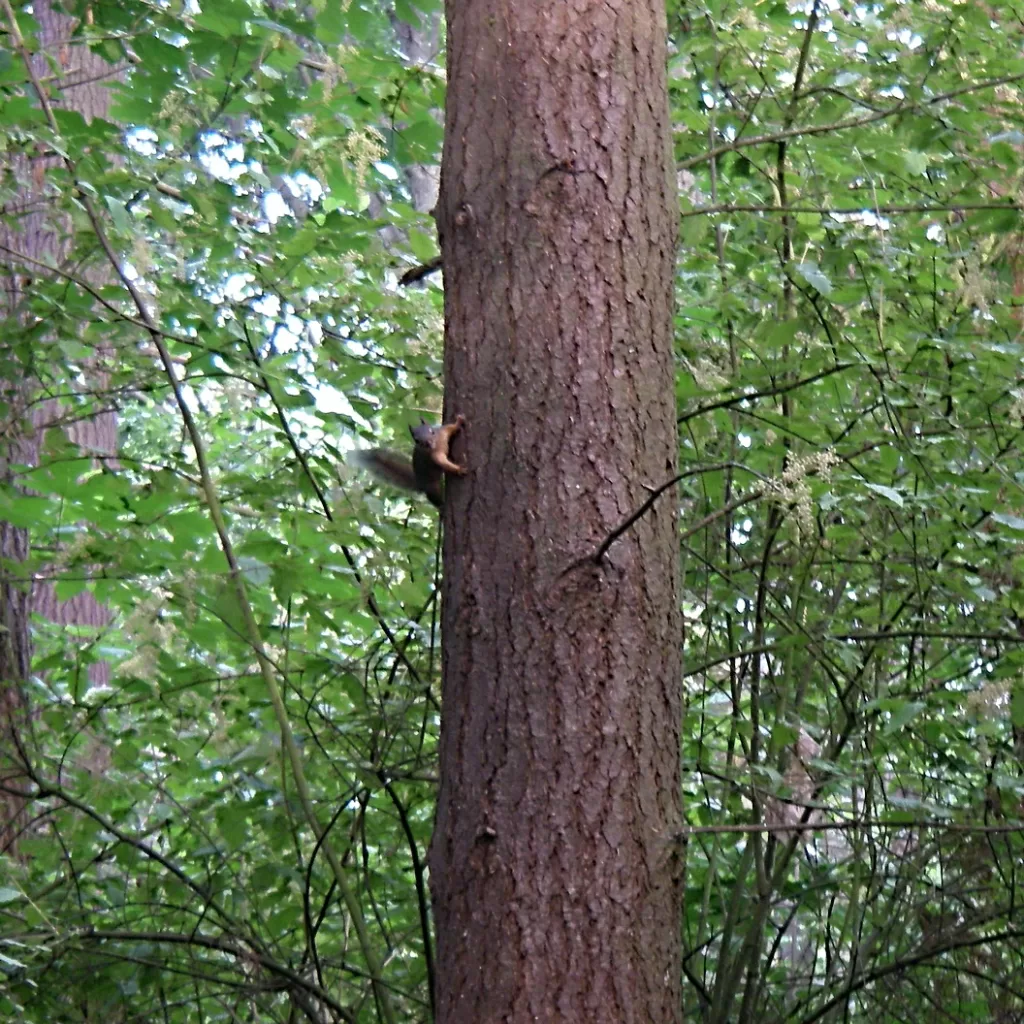Douglas Squirrels in Forest Park
A Douglas Squirrel in the territory of the abundant Eastern Grays? I have seen them occasionally in the more remote, less developed portions of Everett’s Forest Park, but this was new. I figured it was likely a juvenile searching for an unoccupied patch of woods, and that it would soon be driven out of this area by the larger, more aggressive Grays. Nevertheless, seeing a native Douglas Squirrel anywhere in the Park was a good sign, because it meant that there must be at least one successful breeding pair back in the woods.

Usually, my encounters with Douglas Squirrels have occurred in more remote areas of the Park. If I happened to surprise one foraging on the ground, it would immediately scramble up the nearest tree. Once safe on a high perch it would initiate a loud, incessant scolding that continued until I moved on down the trail out of the squirrel’s sight. However, in the last couple of years I have been surprised to walk past Douglas Squirrels that did not scold me at all.
Habituation to Humans?
Perhaps, over repeated generations, the Park’s small population of Douglas Squirrels has become more habituated to humans and their associated dogs, loud voices, and internal combustion engines. Populations of some indigenous bird species, like Bewick’s Wrens and Dark-eyed Juncos have adapted to suburbia, and maybe the same is happening with Douglas Squirrels. After a century without being hunted perhaps recent generations of Douglas Squirrels in Forest Park have learned that humans are safe.
Wildlife Corridors
Nevertheless, the continuing existence of Douglas Squirrels in Forest Park is uncertain because they are isolated – disconnected from the healthy, genetically diverse populations of their species in the Cascades. The six patches of forest in Forest Park are each islands surrounded by pavement and turf, and the overall Park itself is an island surrounded by urban development. In a perfect world, urban forest restoration in the Puget Lowlands would include a system of east-west wildlife corridors that juvenile Douglas Squirrels and other native wildlife from the Cascades could safely travel as they searched for new territories to call home.